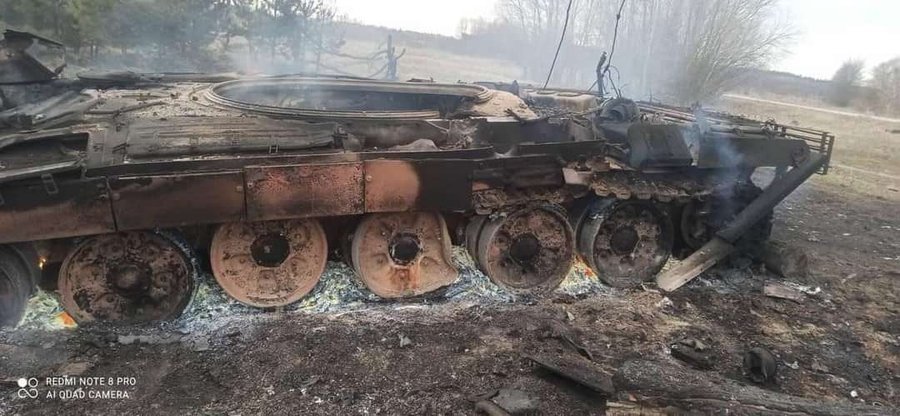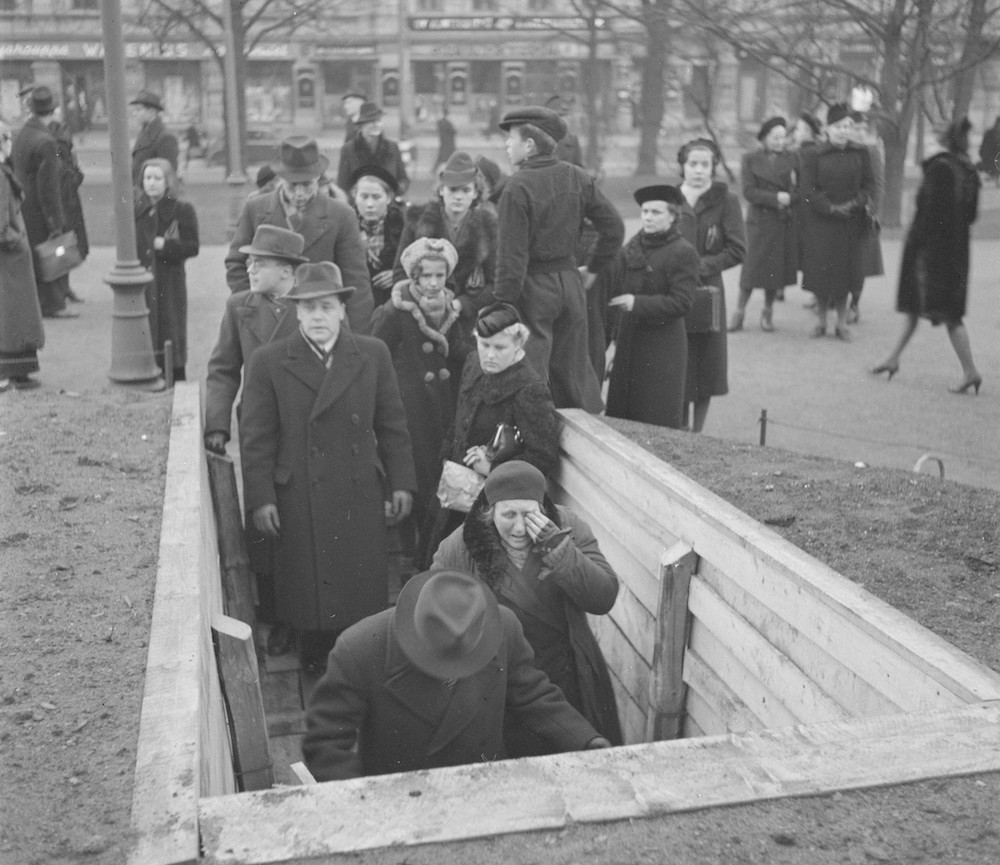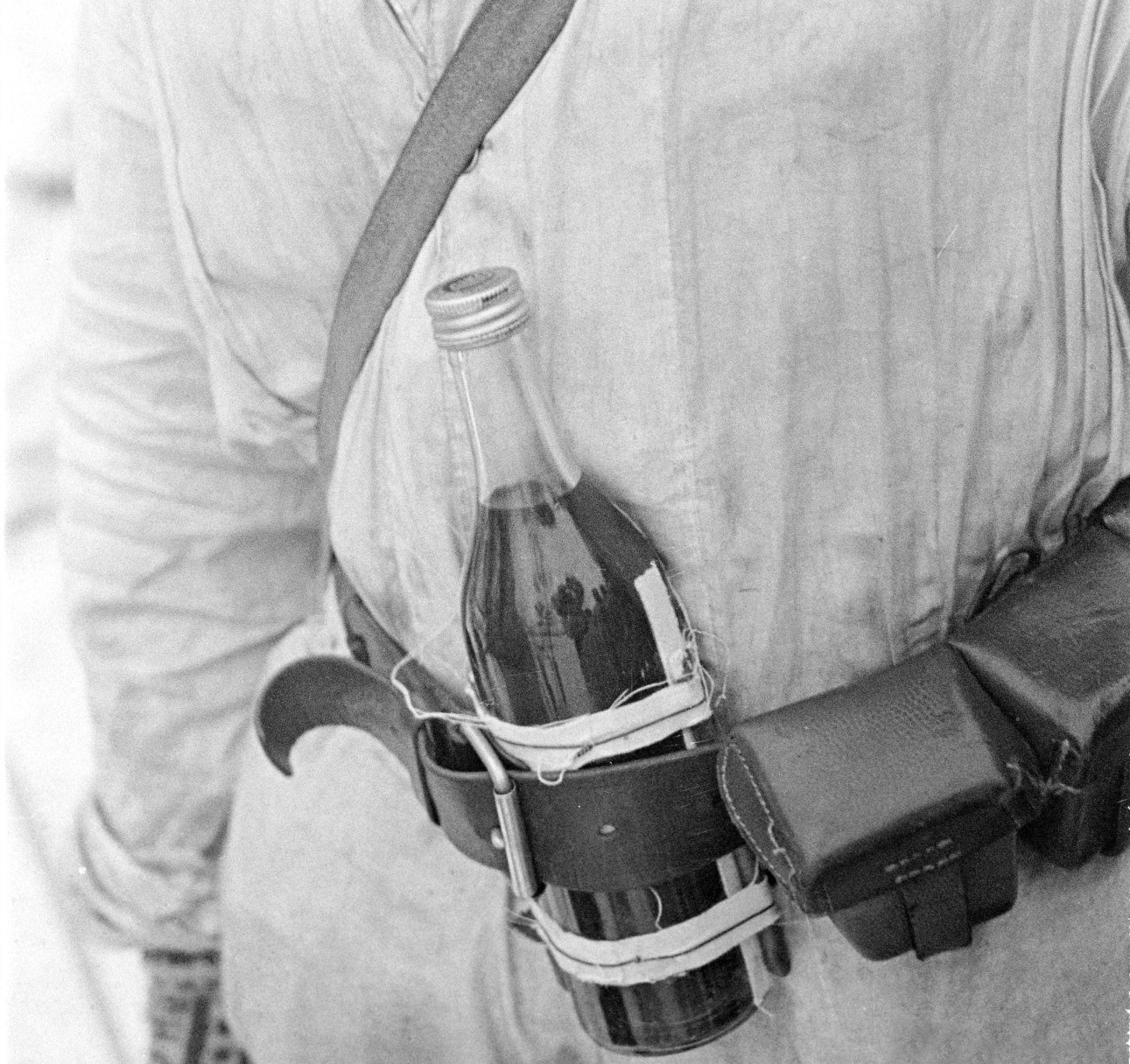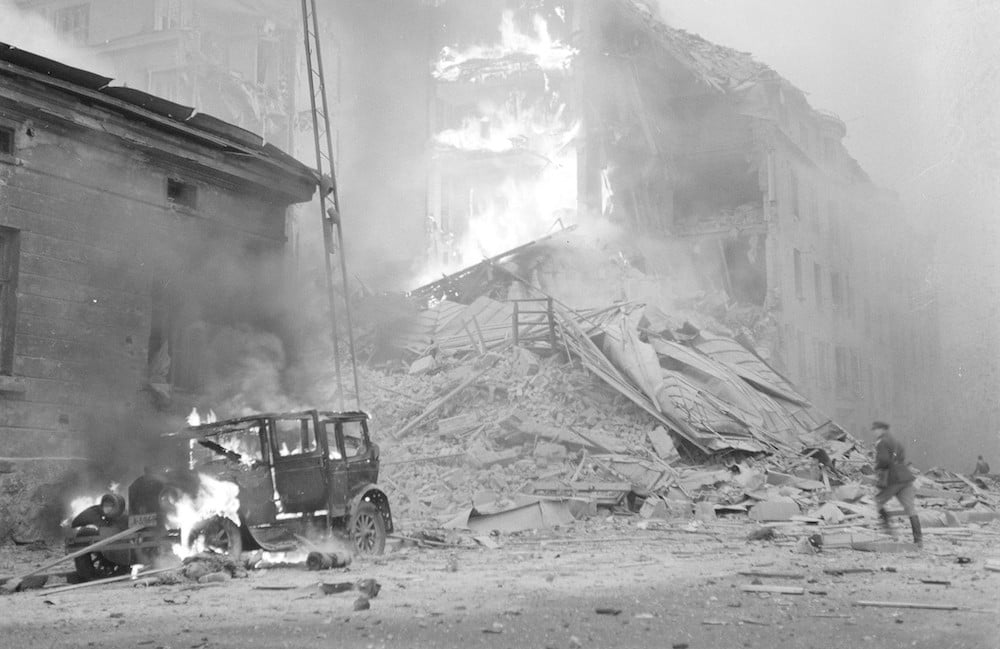'Epitaph on a Tyrant' by W.H. Auden
Perfection, of a kind, was what he was after,
And the poetry he invented was easy to understand;
He knew human folly like the back of his hand,
And was greatly interested in armies and fleets;
When he laughed, respectable senators burst with laughter,
And when he cried the little children died in the streets.
Using drones and anti-tank weapons, small, agile units of the Ukrainian army have fought much of Putin’s army to a deadly standstill. Long armoured convoys plodding along on congested roads during the mud season have made easy targets for night ambushes. One special forces unit outside of Kyiv killed 60 Russian soldiers in nine days of fighting while losing only two of its own members.
“We’re in shock at how dumb their behaviour is,” a special forces trooper told the Wall Street Journal. “Now, we mostly focus on hitting their rear, their supply convoys, because if they don’t get fuel, they can’t do anything.”
Under another tyrant the Russians experienced a similar crushing defeat nearly 80 years ago.
The Winter War lasted 105 days. A nation of four million people defied an empire of 170 million.
The defenders of Finland did not have planes or armoured vehicles. Nor did they have artillery.
Yet they had grit, ingenuity and something every imperialist lacks, a sense of humour.
In contrast the Soviet aggressors boasted columns of heavy armour and artillery. They anticipated an easy victory with superior force.
But the Finns upended the Soviet apple cart and fought one of the world’s most powerful armies to a standstill. (Here is a remarkable archive of images from the Winter War with grim resonance today.)
Can Ukraine win its spring war? If so it will have to repeat the Finnish playbook, abetted by the West’s solid support in small arms and anti-tank weapons. We know that such victory will come at great cost.
‘Brave Little Finland’
Military historians have been writing about tactics used in the Winter War for years — with awe. “Operating on conventional military strategy, the Russians were no match for the Finnish guerilla tactics," explained Richard W. Condon in The Winter War. “Time after time in the early stages of the war, they proved themselves incapable of imaginative innovations in the face of the unusual.”
“The valour of ‘Brave Little Finland’ made the vaunted Red Army look like a giant with feet of clay, and inflicted upon Joseph Stalin the worst humiliation of his career,” added U.S. historian William R. Trotter in his book A Frozen Hell: The Russo-Finnish Winter War 1939-1940.
Every day the world can see echoes of this fierce resistance in the way Ukrainian troops, reservists and citizens have begun to slice and dice Putin’s military convoys proving once again that a few resources can achieve big effects when wielded strategically by a determined people.

The Americans were taught this lesson in Vietnam but did not learn it; now Putin is being taught the lesson again in Ukraine. And like American imperialists of old, he, too, will be defeated.
The Winter War began much like Putin’s invasion of Ukraine. Stalin claimed that he needed geographical security against potential threats from Germany. But the dictator also wanted to reincorporate Finland back into Russia’s old imperial empire. (Imperialists, who believe their own propaganda, are always obsessing about greatness restored from some previous epoch.)
Finland gained its independence from Russia in 1917 after a bloody civil war. It had declared itself neutral at the start of the Second World War. And, having watched the takeover of Latvia and Estonia, Finland rightfully feared the Soviet Union’s designs for expansion.
When the Soviets made its demands for more territory, the Finns prepared their army and asked for assistance from the West. They got much less than Ukraine ever did.
Then Stalin ordered his army to fake a border incident in 1939. More than half a million troops poured across the border in one of the coldest winters on record. And Stalin, much like Putin in Ukraine, thought that ordinary Finns would welcome the Soviets as liberators.
His officers planned for a 12-day police operation. (Tyrants always underestimate the fortitude of ordinary people wedded to their homes.) In time, 1.2 million Russian soldiers would be committed to the fight, more than double the invading force.

In his memoirs, former Soviet Premier Nikita Khrushchev admitted that Soviet technocrats predicted a cakewalk: "All we had to do was raise our voice a little bit and the Finns would obey. If that did not work, we could fire one shot and the Finns would put up their hands and surrender. Or so we thought….”
But the Finns did not put up their hands, and they did not surrender. Using winter as a weapon, they resisted for three months with little or no assistance from allies such as Sweden and France.
Poorly trained Soviet troops with little idea of what they were fighting for or why soon found themselves in frozen heaps.
Mobile Finnish reservists camouflaged in bed sheets took to skis to cut off supply lines. Soon Soviet tanks had no fuel, Soviet horses no oats and Soviet soldiers no food.
As one Soviet general lamented: “The Finns have no effective air force, few tanks and little artillery, but they seem to have an inexhaustible supply of skis.”
The Finns placed mines in frozen lakes and detonated them whenever the Soviet troops crossed to escape forests filled with snipers.
Constantly changing tactics, the Finns also targeted Soviet field kitchens to exacerbate fear in hungry troops.
Every time the Finns withdrew from a position, they booby trapped every farmhouse and village.
Birth of the Molotov cocktail
The Finns even named an incendiary device for disarming tanks after Soviet Foreign Minister Vyacheslav Molotov.
When Soviet airplanes bombed Helsinki (and the Soviets bombed just as ruthlessly as Putin), Molotov denied any such bombings had taken place. He called it a Finnish hoax, and said the Russians were just dropping food and humanitarian aid.
In response the Finns called the bombs “Molotov’s bread baskets.”
Then the witty resisters decided the bread bombs needed an accompanying beverage. And so the Molotov cocktail was born. (The incendiary device had been invented in Spain with beer bottles during the civil war.)
Soon Finland’s state alcohol retailer was making cocktails with a mixture of tar, gasoline and ethanol to disable Russian tanks. (Like Ukraine, the Finns mobilized their people into one resisting force.)

A carefully thrown cocktail — aimed at a tank’s ventilation system — forced its occupants out into the open where snipers could dispatch the crew. The Soviets lost hundreds of tanks this way in the forests of Finland.
The forest was a killing ground for the Soviets. For the Finns, it was the inspiration for how to fight. In Finland everyone knows how to chop wood and calls a cubic metre of firewood, a motti. It soon became a famous military tactic taught around the world. Outgunned and outmanned the Finns broke up Soviet armoured columns in mottis or small units that could be encircled, chopped up and destroyed with minimum use of resources.
At the cost of a few hundred men on skis, the Finns killed thousands of Soviet soldiers wedded to their vehicles in dark pine forests where snow prevented any movement off the road.
When destroying a segment of a truck convoy, Finnish snipers typically targeted radio crews and officers first to demoralize the remaining force. One famous sniper killed more than 500 Soviet soldiers.
The Finns ambushed long conveys of Soviet armour day and night. They preferred the night because that’s when Soviet soldiers built large camp fires to beat away the cold. The light provided excellent targets for snipers.
From one motti skirmish to another, the Finns moved quietly across the winter landscape, using reindeer to transport heavier machinery.
‘Feet of clay’
A military historian recently noted the success of “Motti tactics was largely based on the Finnish troops’ greater mobility, the element of surprise, the exploitation of harsh and difficult forested terrain and climatic conditions, as well as on the Finns’ ability to adapt to changing circumstances.”
Although promised troops by England and France, outside help for Finland never materialized.
At the end of 10 weeks the Finns realized that their undefeated army had run out of resources and was outnumbered.
And so its leaders reluctantly signed the Moscow Peace Treaty on March 12, 1940. Although it ceded 11 per cent of its territory to the Soviet Union, Finland retained its sovereignty and its independence.
The ceding of 22,000 square miles of land to Stalin created some 450,000 Finnish refugees.
During the war 500,000 members of the Soviet military were killed or injured. In contrast the Finnish army lost 25,000 men. Another 5,000 Soviet soldiers taken prisoner by the Finns were repatriated after the armistice. But they met a Stalin-like end: shot for having surrendered.
The Soviets also lost some 1,000 aircraft and 2,300 tanks and armoured vehicles. As one Soviet general remarked, "We have won enough land to bury our dead.”
Soviet leader Nikita Khrushchev later recalled that, "All of us — and Stalin first and foremost — sensed in our victory a defeat by the Finns. It was a dangerous defeat because it encouraged our enemies' conviction that the Soviet Union was a colossus with feet of clay."
#Ukraine: Images that tell a story. A Russian convoy in Pavlove Pole, #Kharkiv was ambushed in the forest, leaving behind a destroyed Tiger-M and two transport trucks.
— 🇺🇦 Ukraine Weapons Tracker (@UAWeapons) March 5, 2022
Notable materiel left behind includes RPG-30, 2x 9M113 ATGM with 9P135M GLS, Kord HMG & AGS-17 drum magazine. pic.twitter.com/TjZBWxXuJC
Every empire has brittle feet, and they are now exposed in Ukraine. If the country’s hardy people can hold on for several more weeks and emulate the Finns by channelling, diverting and destroying Putin’s demoralized troops with motti-like tactics, they can defeat a tyrant. And secure their independence.
But to win this ghastly and sorrowful victory, the West will have to sacrifice.
We will have to stop using Russian energy.
We will need to employ every method to isolate Putin in an interconnected world.
We will need to continue to aid those prepared to resist.
Like the Finns, Ukrainians know the cost of submission to tyrants is morally too great for any soul to bear.
Does the West yet understand this? ![]()
Read more: Politics
















Tyee Commenting Guidelines
Comments that violate guidelines risk being deleted, and violations may result in a temporary or permanent user ban. Maintain the spirit of good conversation to stay in the discussion.
*Please note The Tyee is not a forum for spreading misinformation about COVID-19, denying its existence or minimizing its risk to public health.
Do:
Do not: